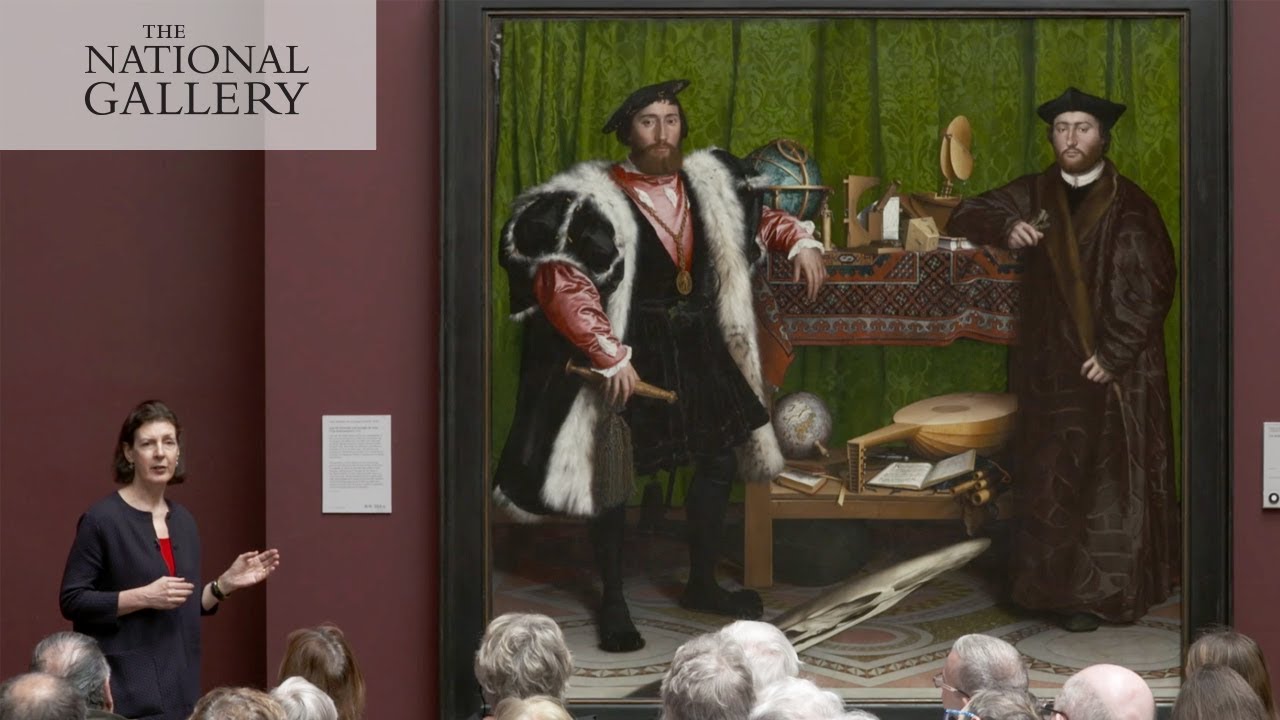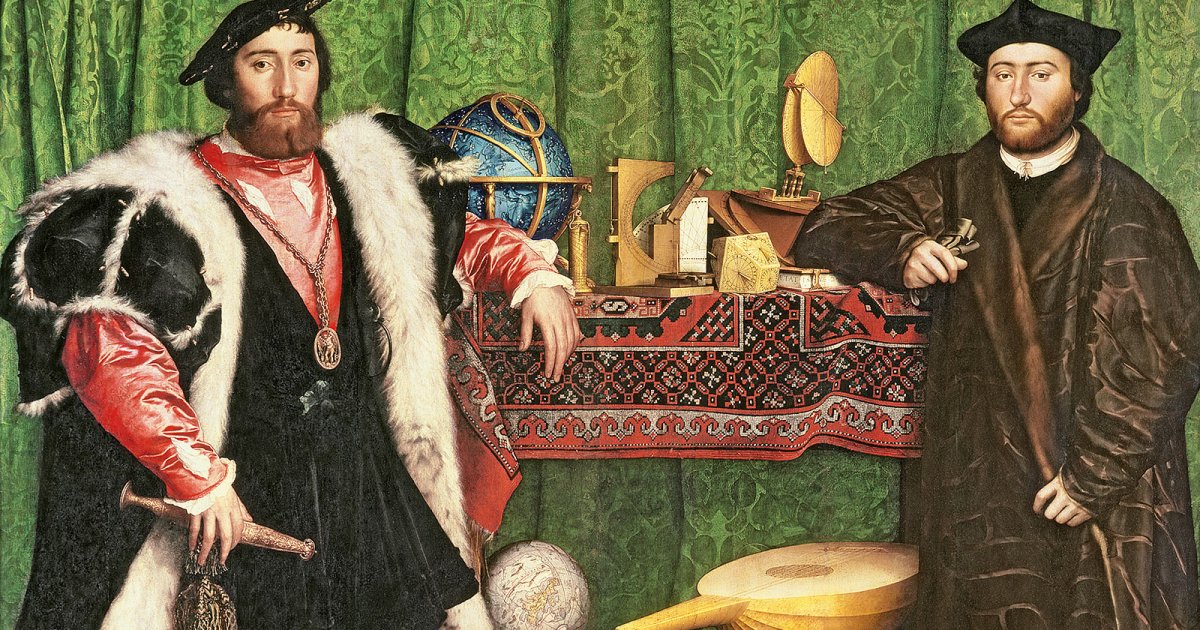Although a German-born artist who spent most of his time in England, Holbein displayed the influence of Early Netherlandish painters in this work. This influence can be noted most outwardly in the use of oil paint, the use of which for panel paintings had been developed a century before in Early Netherlandish painting. What is most "Flemish" of Holbein's use of oils is his use of the medium to render meticulous details that are mainly symbolic: as Jan van Eyck and the Master of Flémalle used extensive imagery to link their subjects to divinity, Holbein used symbols to link his figures to show the same things on the table.

Among the clues to the figures' explorative associations are a selection of scientific instruments including two globes (one terrestrial and one celestial), a shepherd's dial, a quadrant, a torquetum, and a polyhedral sundial, as well as various textiles including the floor mosaic, based on a design from Westminster Abbey (the Cosmati pavement, before the High Altar), and the carpet on the upper shelf, which is most notably oriental, an example of Oriental carpets in Renaissance painting. The choice for the inclusion of the two figures can furthermore be seen as symbolic. The figure on the left is in secular attire while the figure on the right is dressed in clerical clothes. Their flanking of the table, which displays open books, symbols of religious knowledge and even a symbolic link to the Virgin.

In contrast, other scholars have suggested the painting contains overtones of religious strife. The conflicts between secular and religious authorities are here represented by Jean de Dinteville, a landowner, and Georges de Selve, the Bishop of Lavaur. The commonly accepted symbol of discord, a lute with a broken string, is included next to a hymnbook in Martin Luther's translation, suggesting strife between scholars and the clergy.

The terrestrial globe on the lower shelf repeats a portion of a cartographically imaginative map created in possibly 1530 and of unknown origin. The map is referred to as the Ambassadors' Globe due to its popularly known appearance in the painting.

The work has been described as "one of the most staggeringly impressive portraits in Renaissance art.
According to wikipedia.




![[HONORARY DOCTORATE OF RECORD FOR PRACTICE AND EMPIRICAL RESULTS – 2017] LY THI MAI (HO CHI MINH CITY, VIETNAM)](https://aseanrecords.world/wp-content/uploads/2024/04/0_16-27_jpg_751-218x150.jpg)








